The In Vivo Rejuvenation of the Millennium Olives Trees in Bshaaleh Lebanon
Naim Boustanya, Rony El Khouryb*, Georges Hassounb, Nada Sakrc, Grazia Maria Scarpad
aLebanese University, Faculty of Sciences, Beirut - Lebanon
bLebanese University, Faculty of Agronomy, Beirut - Lebanon
cMinistry of Agriculture – Rural development department, Beirut - Lebanon
dDepartment of Agriculture, Viale Italia 39, Sassari, University of Sassari, Sassari - Italy
*Corresponding author: Rony El Khoury, Lebanese University, Faculty of Agronomy, Beirut – Lebanon;
Received: 15th Dec-2018; Revised: 30th Jan-2019; Accepted: 28th Mar-2019;
Copyright: ©2019 Rony El Khoury. This is an open-access article distributed under the terms of the Creative Commons Attribution License , which permits unrestricted use, distribution, and reproduction in any medium, provided the original author and source are credited
Article Information
Citation: Naim Boustany, Rony El Khoury, Georges Hassoun, Nada Sakr, Grazia Maria Scarpa. The In Vivo Rejuvenation of the Millennium Olives Trees in Bshaaleh Lebanon 9 (2019): 19-25.
View / Download Pdf Share at FacebookAbstract
Olive trees (Olea europaea L.) in Bshaaleh region are millennium ones. In order to safeguard their local genetic resources, this study proposed to establish a culture initiation from axillary buds in vivo conditions. Fifteen shoots were collected during 3 seasons spring, summer and autumn and for 2 consecutive years (2009 and 2010). The Lebanese cultivar Souri was used in 2010 as control. The healthy shoots were treated with a mixture of fungicides and cut into segments with 4 to 6 nodes. The obtained cuttings were then dipped in a talc formulation of NAA for 30 minutes and planted in pots and left for 2 months in the greenhouse under controlled conditions. Several parameters were studied. The highest rate of proliferated buds (88%) was recorded in spring 2010.The highest percentage of newly developed leaves (11.2%), of callus formations (36%) and of rooting ability (10.67%) in Bshaaleh cuttings occurred during autumn 2010. Positive correlation was showed between length of cuttings and number of newly developed leaves.
Keywords
Olive, Bshaaleh in vivo, axillary buds, NAA
Article Details
INTRODUCTION
Olive tree (Olea europaea L.) is a member of the Oleaceae family grown in Mediterranean climate regions for its fruit and oil [1]. More than 2,000 olive varieties are listed in the world; each country focuses on cultivars which are differentiated by tree habit, phenology, and morphology of leaves and fruits [2] and economic value [3]. Among olive plants grown in Lebanon, Millenium olives of Bshaaleh, found in the mountain village of Bshaaleh - Lebanon, are reportedly among the world’s oldest living and still productive olive trees [4]. Called the 'Sisters' of Noah, they solely consist of an undocumented olive tree variety, which is the Ancestor of the Baladi - Ayrouni olives, the most acclaimed olive tree variety in the Mediterranean and the world [5]. AFLP, used to study diversity among Lebanese olive trees varieties in Bshaaleh suggested that all the ancient olive trees of Bshaaleh were related to the same variety
Therefore, it is becoming important to try to preserve these ancient local genetic resources and rejuvenate it, either by in vitro or in vivo A study undertaken by [7] has set up in vitro culture from axillary buds of Bshaaleh millennium trees.
In vivo olive propagation relies on certain techniques for the multiplication of plants. The olive tree has proven to be very efficient at differentiating new meristems at the collar, where the transition from trunk to root system happens. The resulting plants should be identical to the plants from which they derived [8]. According to [9], extremely fast-growing, soft tender shoots are not desirable, as withering and drying are likely before rooting. The most popular method for olive tree multiplication consists of rooting softwood cuttings, collected from one-year shoot [3]. This technique enables to reproduce the same variety all year round with no need for grafting [10]. Once introduced, the misting technique for shoot rooting offered a valid alternative to the old techniques [8], when used in the nursery under specific conditions, it reduces transpiration and leaf temperature while increasing relative humidity, thus enabling cuttings to remain turgid throughout root induction [11]. Indole-3-butyric acid (IBA) 1-Naphthaleneacetic acid (NAA) can be used to treat olive cuttings but according to [9], NAA showed more effectiveness than IBA in some plants that respond unsatisfactorily to IBA This study proposes to settle a culture initiation from axillary buds of Bshaaleh millennium olive trees, in vivo conditions, where cuttings will be treated by a talc formulation of NAA.
MATERIALS AND METHODS
In order to assess the potential of multiplication by cuttings, 15 healthy shoots, of 12-15cm in length and 0.6-0.8cm in diameter, were collected during the three seasons spring, summer, autumn on the 15th of April, 15th of July and 15th of October for two consecutive years (2009 and 2010) from one-year old branches from the Millennium olive trees of Bshaaleh in collection. The Lebanese cultivar Souri was added, in the second year, as a control in the evaluation. Shoots were soaked for one hour in a fungicide mixture of propamocarb-HCl (25g/l), carbendazim (20g/l), fosethyl-aluminium (60g/l) and methalaxyl+mancozeb (50g/l). They were, then, cut into segments comprising 4 to 6 nodes. The cuttings were dipped in a talc formulation of NAA (0,8%) for 30 minutes. The cuttings were then put in pots of 12 cm in diameter. The rooting substrate consisted of peat moss and black peat, with a ratio of 1 to 3 to maintain proper humidity and to minimize the weakening of the emerged roots. The pots were place in a tunnel structure (7m*1.4m) covered by a white polyethylene cover of 180µ thickness. During the whole periods of the experiment, temperature and humidity were adjusted to 20±1°C and >80% R.U., where heating pipes were placed under the pots and a mist system was set up above the plants, for two months until the development of the roots. Rooting was verified every three days. The survival rate of proliferated buds, number of newly developed leaves, length of the cuttings, callus and root formation were assessed 30, 45 and 60 days after placing them in the small green house for each cultivar (Bshaaleh, Souri), season (spring, summer, autumn), year (2009, 2010) and number of days after initiation. Data were submitted to variance analysis, using the software SPSS version 14.0.
RESULTS AND DISCUSSION
For Bshaaleh cuttings sampled during September 2009, the percentage of proliferated buds was 66.67%, while the highest rate (exceeding 88%) was recorded in spring 2010 (Figure 1). The spring and summer seasons of 2009 recorded rates of 56.6 and 40%respectively, compared to 60 and 76% during summer and autumn 2010. For Souri cuttings, the percentage of proliferated buds ranged between 60 and 76.67%. All proliferated buds started to appear within one month. The power of emergence and difference in number of proliferated buds is mainly caused by the use of foliar fertilizer (20/20/20) during the period between May and October 2009, that resulted in a better vegetative growth on the millennium trees during 2010.
For the mean number of newly developed leaves in Bshaaleh cuttings, autumn season yielded the highest rates during 2009 and 2010 with 9.9 and 11.2 respectively, followed by the summer season with a rate of 7.25 in 2009 and 8.63 in 2010. The lowest number of newly developed leaves was observed during spring with 6.59 and 7.2 for the years 2009 and 2010 respectively. The highest number of newly developed leaves was seen on Souri cuttings with 14.6 during autumn 2010 (Figure 2). The newly developed leaves were significantly influenced (p<0.001) by cultivar, year, season and days after initiation (Table 1).
The number of new leaves was positively influenced by the length of the shoot. For Bshaaleh genotype, autumn (2010) yielded the longest cutting (4.3cm) followed by summer (4cm) and spring (3.9cm). The best length was seen on Souri cultivar (5.8cm), during autumn season (Figure3). Similarly to the number of newly developed leaves, the length of developed cuttings was significantly influenced by cultivar, year, season and days after initiation at p<0.001 (Table 2).
During 2009, the percentage of callus formations in Bshaaleh cuttings ranged between 13.33 and 23.33%, while it reached 36% during 2010. The highest callus development was observed during autumn 2010. The lowest percentage of callus formation was recorded during summer season of 2009 and 2010 on Bshaaleh and Souri cv.
Compared to Bshaaleh cuttings, the Souri cv. Cuttings showed a higher percentage of developed callus during the three seasons of collect, spring, summer and autumn with 33.33, 30 and 46.66% respectively. The lowest percentage was recorded in Bshaaleh cuttings with 13.33% during autumn 2009 (Figure 4). The number of days after initiation played a key role and significantly impacted callus development. Concerning the influence of cultivar, year and season, cuttings acted similarly displaying one trend; while the number of days after initiation significantly influenced callus formation at p<0.001 (Table 3). The best callus formation (32%) was observed during autumn, followed respectively by spring (26.9%) and summer (19.8%) regardless of cultivar.
Table 1. Effect of cultivar, year, season and number of days after initiation on the newly developed leaves
|
Cultivar |
Year |
Season |
Days after initiation |
|||||
|
F |
P |
F |
P |
F |
P |
F |
P |
|
|
Number of newly developed leaves |
25.287 |
0.000*** |
100.418 |
0.000*** |
52.823 |
0.000*** |
413.128 |
0.000*** |
*** indicates significant difference from initial value at p<0.001
Table 2. Effect of cultivar, year, season and number of days after initiation on the length of the cuttings
|
Cultivar |
Year |
Season |
Days after initiation |
||||||
|
Length of cuttings |
F |
P |
F |
P |
F |
P |
F |
P |
|
|
35.361 |
0.000*** |
438.003 |
0.000*** |
59.055 |
0.000*** |
502.769 |
0.000*** |
||
|
*** indicates significant difference from initial value at p<0.001 |
|||||||||
|
Table 3. Effect of cultivar, year, season and number of days after initiation on callus formation |
|||||||||
|
Cultivar |
Year |
Season |
Days after initiation |
||||||
|
Callus formation |
F |
P |
F |
P |
F |
P |
F |
P |
|
|
1.747 |
0.187 |
3.546 |
0.600 |
0.487 |
0.615 |
32.428 |
0.000*** |
||
*** indicates significant difference from initial value at p<0.001
The percentage of the rooted Bshaaleh cuttings ranged between 0 and 16.66%. Souri recorded the highest number of rooted cuttings with 30%, followed by Bshaaleh cuttings during autumn 2010 with 16.66% (Figure 5). The low percentage probably resulted from the media used, with a high water-holding capacity, which failed to provide an appropriate environment for the development of adventitious roots. In fact, [12] obtained better results as they used media with a reduced water-retention capacity and good aeration.
Root formation in Bshaaleh cuttings was greatly influenced by the number of days after initiation and the year, where the number of rooted plants was the highest during 2010 in both the Souri cv. and Bshaaleh cv. Season had no impact on the rooting, cuttings acted similarly and yielded the highest number of rooted cuttings during autumn followed by spring and summer (Table 4).. These results are in contradiction with [13] who described the negative effect of peat on the root, because of its high water-retaining capacity especially in autumn where solar radiation levels are low. [14], who conducted a three-year experiment on the rooting ability of 83 Turkish olive cultivars, found major differences between years in terms of root production; while the rooting ability between years have been ascribed to the alternate bearing trend shown by mature stock plants, which might be related to the endogenous carbohydrate status [15].
The increase in cortex thickness during rooting [16] is possibly the key factor that affected the rooting of Bshaaleh cuttings, forming a mechanical barrier preventing the emergence of the initial roots. Some surviving cuttings that did not develop callus and roots; possibly due to the media used (peat, potting soil). [17] also obtained cuttings with no roots and callus on other media combination (perlite, peat, sand, silt), while [18] obtained successful rooting for difficult to root cultivars on the same combination. Another combination of potting soil and styromousse (1:1) yielded the highest percentage of rooted Picual cuttings (92.5%) [19]. The difference between media could be linked to the low water retention capacity, very good drainage and aeration of roots.
Evolution of parameters
The number of days after the introduction of cuttings significantly affected all the parameters: number of new leaves, length, callogenesis and rhizogenesis. During 2010, the best results were recorded sixty days after the introduction of cuttings, reaching 9 as number of new leaves and 3.7cm of length; while the reported callus formation was 25.33% (19 cuttings). Finally, the number of rooted explants was 8% (6 cuttings). The years, 2009 and 2010, witnessed the same trend and significantly influenced all the parameters: number of new leaves, length, callogenesis and rhizogenesis. The mean values of new leaves (11.2), length (4.39), callus formation (36%) and root development (16%) was observed during autumn 2010, while the best season for proliferated buds was the autumn season of 2009 with 84%.
The use of NAA on Bshaaleh cuttings did not provide similar results as [20] who proved that the use of 0.2% NAA powder was more effective on difficult to root “Galega Vulgar” than a treatment with 5000ppm liquid IBA. On the other hand, [21] found that a quick dip of “Gemlik”, an easily rooted cultivar, in an NAA solution of 2000 ppm was more effective than an equal concentration of IBA.
The number of newly developed leaves and the length of cuttings (0.911) were strongly and positively correlated as shown in table 5.
Table 4. Effect of cultivar, year, season and number of days after initiation on roots formation
|
Cultivar |
Year |
Season |
Days after initiation |
||||||
|
F |
P |
F |
P |
F |
P |
F |
P |
||
|
Roots formation |
0.841 |
0.360 |
8.864 |
0.003** |
2.952 |
0.530 |
23.582 |
0.000*** |
|
- indicates significant difference from initial value at p<0.01
- indicates significant difference from initial value at p<0.001
Table 5. Correlation between the different cuttings parameters studied
|
Correlation |
Number of newly developed leaves |
Length |
Callogenesis |
Rhizogenesis |
|
Number of newly developed leaves |
1 |
0.911 |
0.354 |
0.36 |
|
Length |
0.911 |
1 |
0.391 |
0.391 |
|
Callogenesis |
0.354 |
0.391 |
1 |
0.491 |
|
Rhizogenesis |
0.36 |
0.391 |
0.491 |
1 |
CONCLUSION AND RECOMMENDATION
The in vivo rooting ability of Bshaaleh cuttings was influenced by cutting size, collection season and medium used. The highest (88%) and lowest (40%) percentage of emerged buds were seen on Bshaaleh cv. during 2010, while this rate did not go beyond 66.7% during 2009. The Souri cv. proved to be superior during autumn season in terms of length (5.73%), the number of leaves (14.6%), and the percentage of callused (46.7%) and rooted (30%) explants. Roots that emerged two months after the plant introduction in vivo failed to develop well in the used mix of peat moss and potting soil. The mean value of rooted Bshaaleh cuttings during 2010 reached 10.67%, while this amount did not exceed 4% during 2009. For economical usage, deciding the appropriate cutting size and rooting media must be the key focus. The use of NAA was not efficient enough and produced only 7% of rooted explants at the end of the experiments. Treatment of other olive cultivars indicated that NAA was not sufficient when applied alone in quick dip. Further studies could use a mixture of IBA and NAA as this mixture could be more beneficial to increase root formation in olive cuttings.
REFERENCES
- Cimato, A. 1999. Propagation et certification des plantes. L’élevage des plants d’olivier en pépinière. Actes du séminaire international sur les innovations scientifiques et leur application en oléiculture et oléotechnie, 10-12 mars 1999, Florence, Italie.
- Breton, C., Médail, F., Pinatel, C., Bervillé, A. 2006. De l’olivier à l’oléastre : origine et domestication de l’Olea europaea dans le Bassin méditerranéen. Cahiers Agricultures, 15(4), pp. 329-336.
- Van der Vossen, H.A.M., Mashungwa, G.N., Mmolotsi, R.M. 2007. Olea europaea In: van der Vossen, H.A.M. & Mkamilo, G.S. (Eds). PROTA 14: Vegetable oils/Oléagineux. Pays Bas.
- Bou Yazbeck, E., Abi Rizk, G., Hassoun, G., El-Khoury, R., Geagea, L. 2018. Ecological characterization of ancient olive trees in Lebanon Bshaaleh area and their age estimation. IOSR Journal of Agriculture and Veterinary Science, 11(2), pp. 35-44.
- Boustany, N. 2011. The Millenium Olives (Olea europaea) in Lebanon: Rejuvenation, Micropropagation and Olive Oil Variation during Maturation and Conservation. PhD thesis, University of Sassari, pp. 143.
- Bou Yazbeck, E., Abi Rizk, G., Battistini, A., Hassoun, G., Geagea, L., Veronesi, F. 2018. Molecular characterization of ancient olive trees in Bshaaleh Lebanon. International Journal of Plant, Animal and Environment Sciences, 8(3), pp. 19-29.
- Boustany, N., El Khoury, R., Hassoun, G., Sakr, N., Scarpa, G.M., 2019. Micropropagation of the Millenium Olive trees (Olea europaea) in Bshaaleh Lebanon. International Journal of Current Research, under press.
- Fabbri, A., Bartolini, G., Lambardi, M., Kailis, S. 2004. Olive propagation manual, Landlinks Press, Collingwood, 141 pp.
- Hartmann, H.T., Kester, D.E., Davies, F.T., Geneve, R. 2017. Plant Propagation: Principles and Practices, 8th Ed, Prentice-Hall, New Jersey. ISBN-13: 978-0134480893, pp. 1024.
- Barranco, D., Fernández, D., Rallo, L. 1996. La culture de l'olivier. European Journal of Agronomy, 21(2), pp. 209-222.
- Coviello, J., Linstrand, M. 2005. Olive production manual, pp. 181.
- Isfendiyaroglu, M., Ozeker, E., Baser, S. 2009. Rooting of “Ayvalik” olive cuttings in different media. Spanish Journal of Agricultural Research, 7(1), pp. 165-172.
- Loach, K. 1988. Controlling environmental conditions to improve adventitious rooting. In: Advetitious root formation in cuttings. Discorides Pree, Portland, Oregon, pp. 248-279.
- Canozer, O., Ozahci, E. 1992. Determination of rooting percentages of olive cultivars at certain hormon concentration. Proc. 1st Horticultural Congress, 13-16 October, Izmir, Turkey, pp. 165-169.
- Ozkaya, M.T., Celik, M. 1999. The effects of various treatments on endogenous carbohydrate content of cuttings in easy-to-root and hard-to-root olive cultivars. Acta Horticulturae, 474, pp. 51-53.
- Ayoub, S.J. 2001. Physiological and anatomical aspects of rooting « Nabali » and « Raseei » olive semi-hardwood stem cuttings. Ph.D. Thesis, University of Jordan, Jordan.
- Gerakakis, A., Ozkaya, M.T. 2005. Effects of cutting size, rooting media and planting time on rooting of Domat and Ayvalik olive (Olea europaea L.) cultivars in shaded polyethylene tunnel (Spt). Tarim Bilimleri Dergisi, 11(3), pp. 334-338.
- Ozkaya, M.T., Celik, M. 1993. The effect of the rooting environment and the combination of auxin and polyamine on rooting ability of Turkish olive cultivars Gemlik and Domat. Acta Horticulture, 356, pp. 5-10.
- Abousalim, A., Mansouri, L. 1991. Utilisation des tablettes chauffantes en bouturage semi-ligneux de cultivars d’Olivier en automne. Actes Inst. Agron. Vet., 11 (3), pp. 17-22.
- Fernandez Serrano, J.M., Serrano, M.C., Amaral, E. 2002. Effect of different hormone treatments on rooting of Olea europaea Galega vulgar cuttings. Acta Horticulturaea, 586, pp. 975-877.
- Celik, M., Ozkaya, M.T., Dumanoglu, H. 1993. The research on possibilities of using the shaded polyethylene tunnels (SPT) for the rooting of olive (Olea europaea). Acta Horticulturae, 356, pp. 21-23.

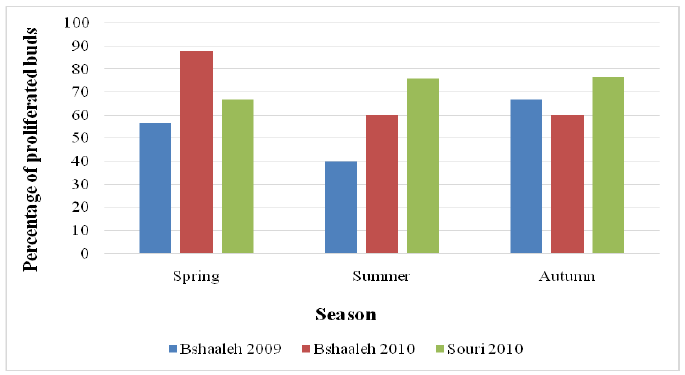
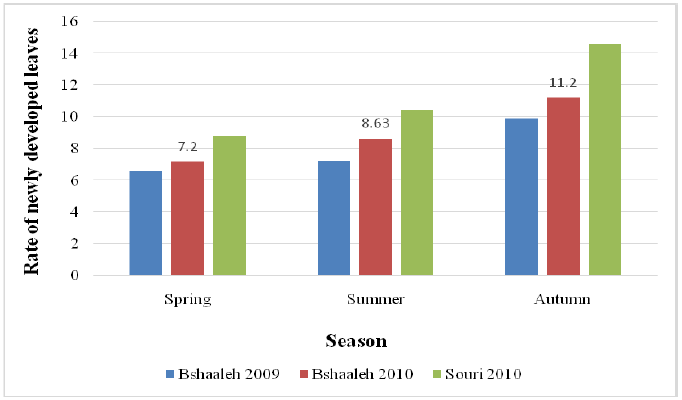
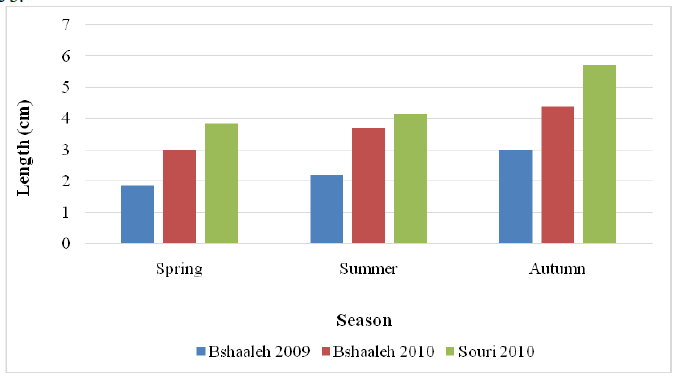
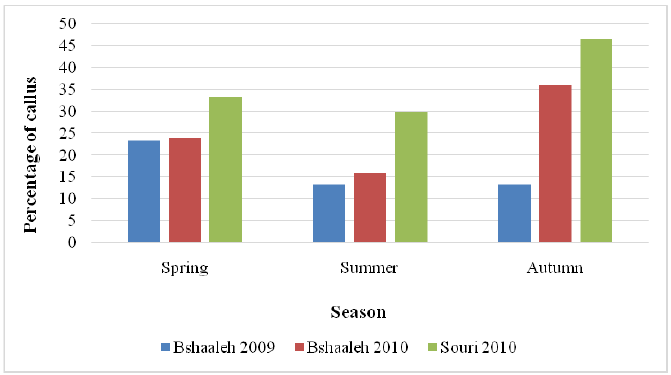
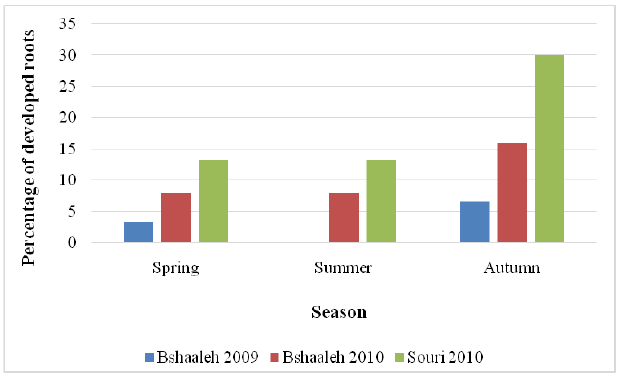

 Impact Factor: * 4.1
Impact Factor: * 4.1 Acceptance Rate: 75.32%
Acceptance Rate: 75.32%  Time to first decision: 10.4 days
Time to first decision: 10.4 days  Time from article received to acceptance: 2-3 weeks
Time from article received to acceptance: 2-3 weeks 